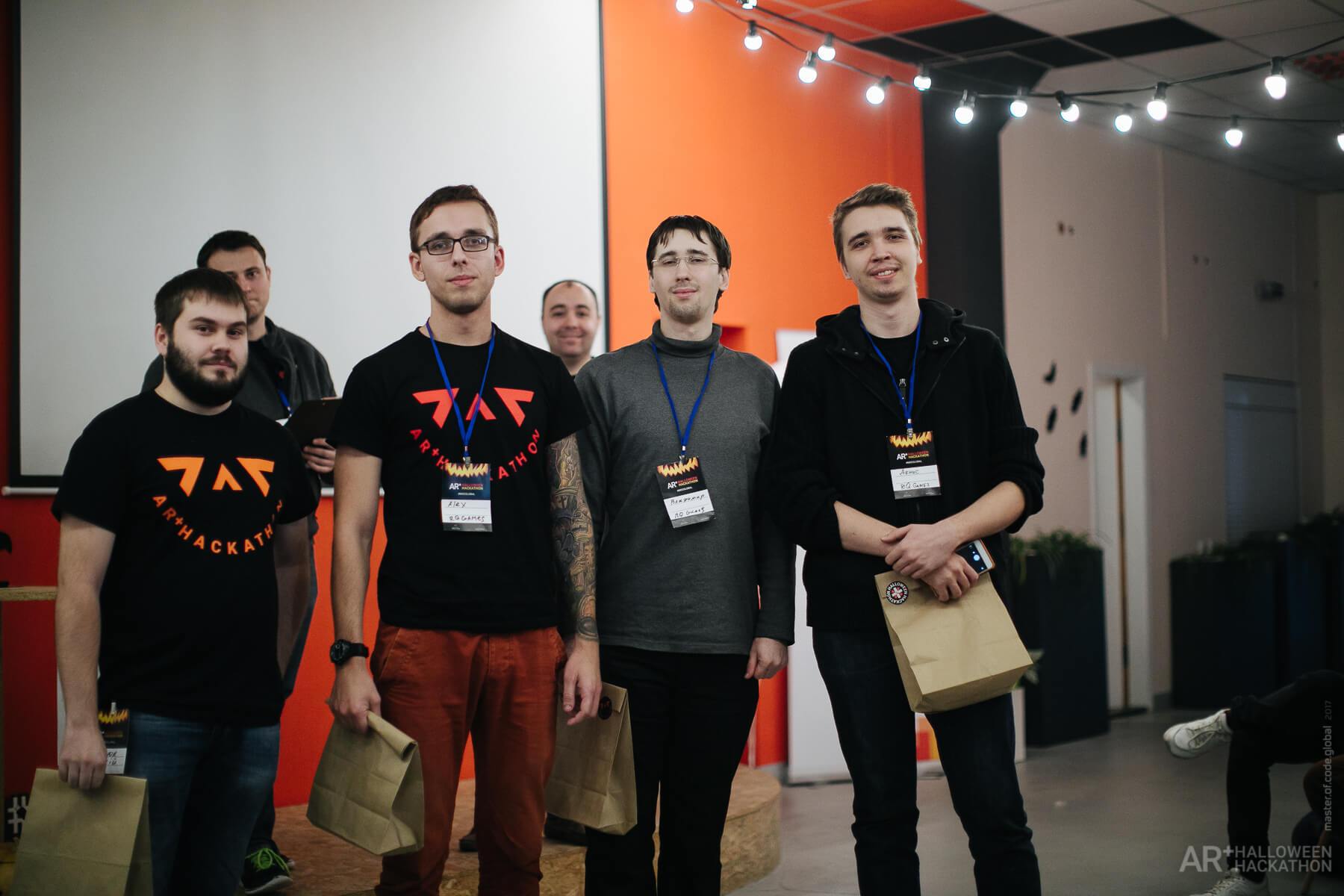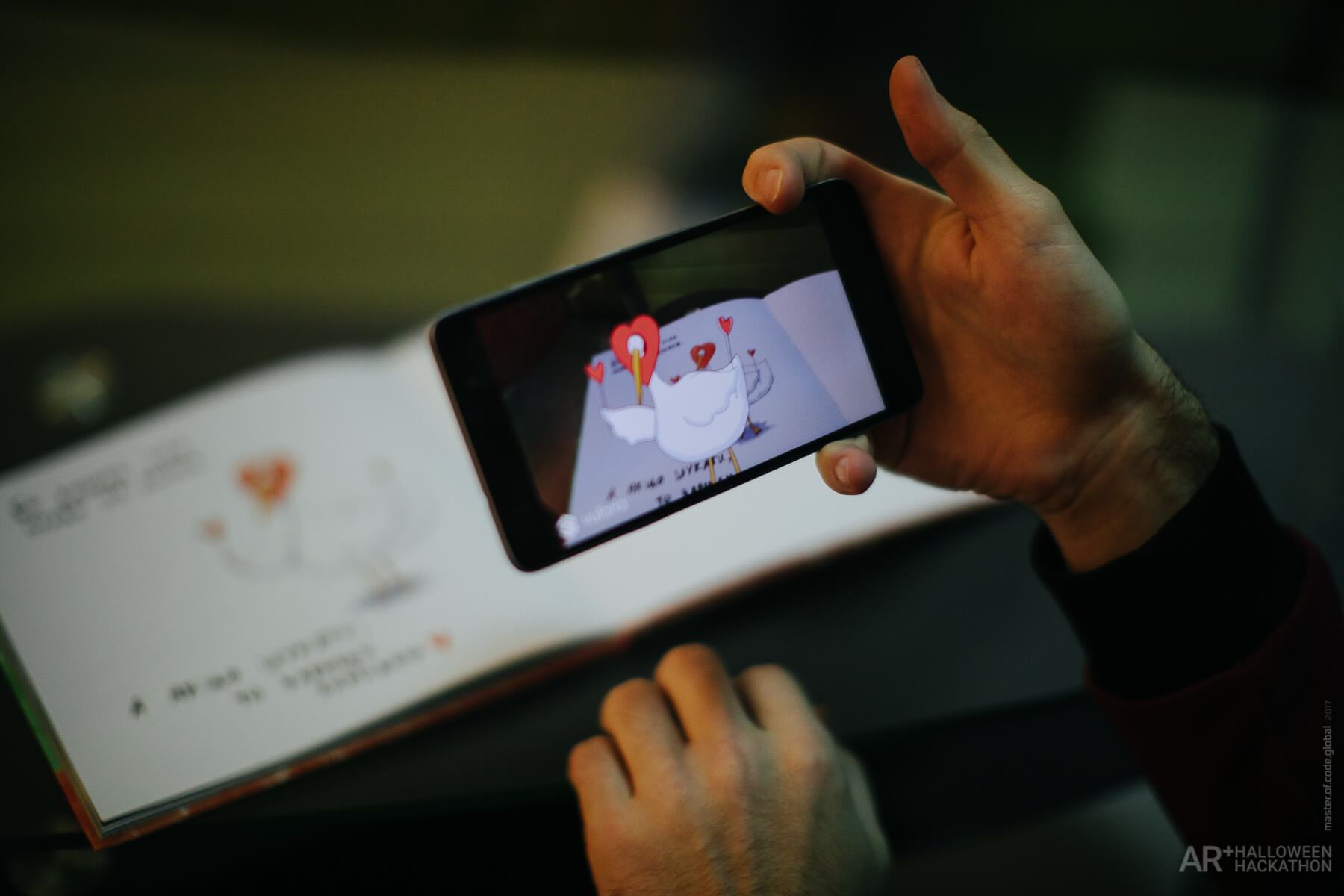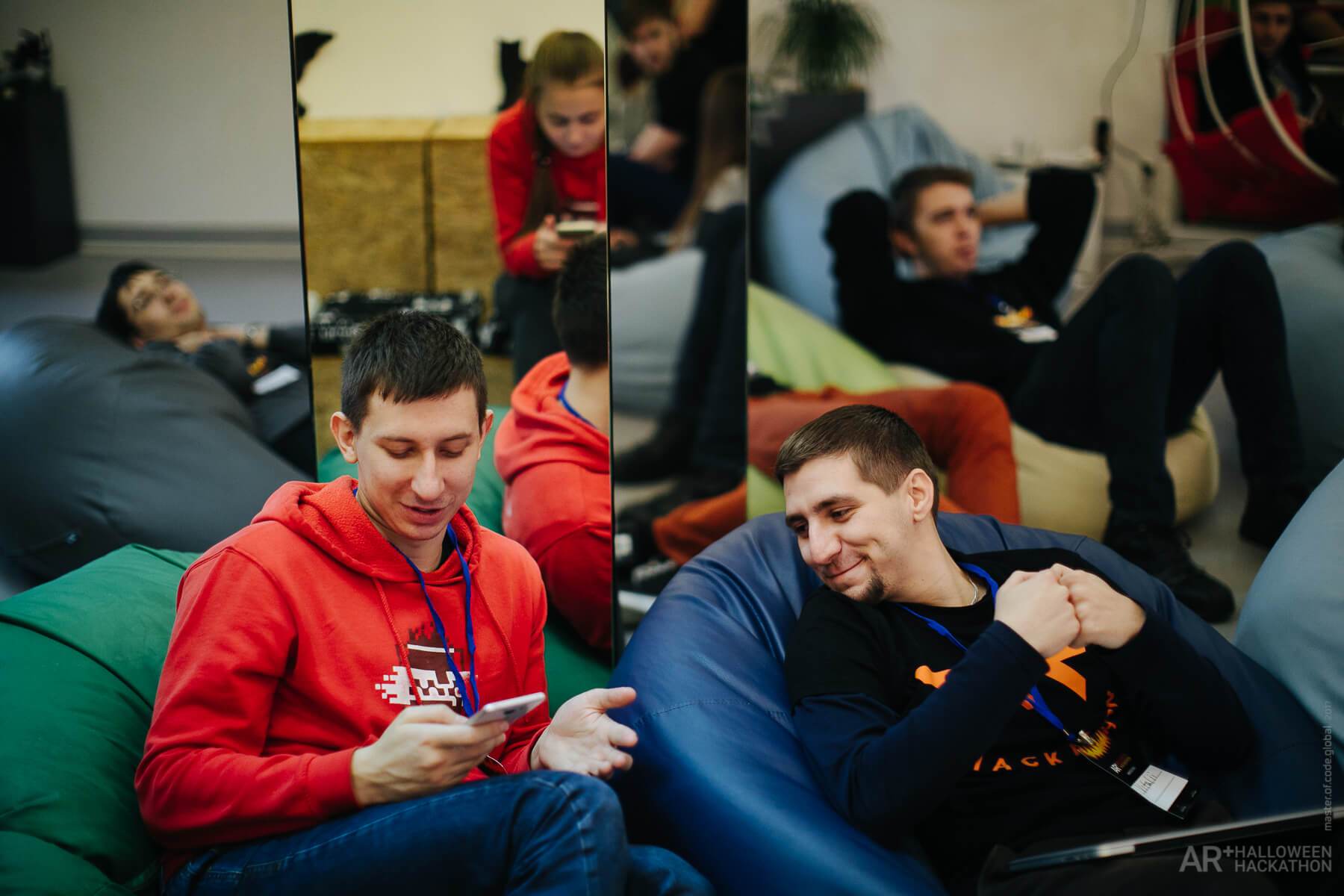After the crazy hype that surrounded the Pokemon GO game, everybody started talking about augmented reality, or AR. AR is a technology that combines virtual elements and reality. AR development helps to place drawn objects in the surrounding space that appear when a camera is focused on it.
Usually at Master of Code we develop non-gaming augmented reality apps that help world-famous brands in their businesses. But that is not what happens on Halloween! Six teams of technology enthusiasts gathered together on the eve of the scariest holiday to develop AR-integrated projects.

Let’s take a look at their projects.
Table of Contents
Third place — RPG Game by RQ Games Team

Everyone from time to time enjoys playing games. The guys from this team especially enjoy RPG games and in the game scenario they designed, the player finds themselves among red and blue paths. By following the blue path, after fifteen steps the choice between two portals appears. There is a monster in one of them, which must be overcome in order to continue the game and a pumpkin in the other.
Eugene Chabanyuk, iOS Developer:
We built our project on Unity 3D using the ARkit plugin for iOS. Firstly, we wanted to use the plugin Vuforia because it is cross-platform and suitable for a larger range of devices. Our app is based on detecting horizontal planes and Vuforia has totally failed it. That’s why we chose ARKit as a much more convenient and stable tool.
To win the game you have to avoid red traces, overcome the monsters and get as many points as possible.
Second Place — Animated 3D Book by BRGames Team

BRGames has developed an interactive way to read printed books. By applying the technology of augmented reality they animated book illustrations. When you focus your phone camera on a book, the picture come alive. Also, they added voice over animation to make it possible even for the smallest readers who do not yet know the letters, enjoy their favorite books.

Mike Antoniv, a BRGames team member, shared his impressions on his first experience of working with augmented reality technology and on participating in AR Hackathon:
AR is a new niche for game and app development, so we are working with the technology for the first time. We used Unity and Vuforia Platform to develop our AR application. Vuforia allows you to track both 2D objects and 3D models, but a new version of the platform has camera issues like exposure metering and high dependence on lighting. One more thing which could be a bummer when using a free version is the limit of 1,000 images in the database. Having such experience with Vuforia I would recommend ARKit as a tool for AR development.
This 2D or 3D animation could be used to make instructions more clear, to simulate clothing and cosmetics fittings, and to show how furniture will look inside your home or office. The commercial and educational applications are limitless, so be sure to contact us to discuss your project or idea.
First place — AR Game with Object Recognition by V3 team

The guys powered an interactive Pumpkin Hunter game, which aims to collect 10 pumpkins. They appear when hovering on certain objects and the player has only 30 seconds to find them. The game tells you which objects are hiding pumpkins, the rest is due to the intelligence and speed of the player.
Valentin Mezentsev about working with AR:
It is very cool to master the technology, which 5 years ago was on the brink of fiction. The hackathon was a great experience of working in a “hard mode” when there is no time for research and make scratches because you need to present a completed project in 24 hours. We are a team of back-end developers who never had the chance to code in Swift before. We used ARKit as an augmented reality platform and Core ML for object recognition. The thing I discovered is pair work on code gives a great boost of productivity and creativity.
Among other presented projects are the application for identifying a person with a camera, scary masks for taking photos, and a game in which it is necessary to catch falling cakes with your mouth.
Every once in awhile we become convinced that the traditional challenges of hackathons — the lack of time and mastering of new technologies in an extremely short time — aren’t obstacles, but rather possibilities for the participants. It only adds spades to the rivalry for winning places. 24 hours is quite enough for project development, and the bonus hour, which gave the switch to winter time, is an opportunity to consider possibilities of their further improvements.
Follow our blog to be in touch with the future hackathons. A lot of interesting things are in store for the future!
Master of Code designs, builds, and launches exceptional mobile, web, and conversational experiences.







